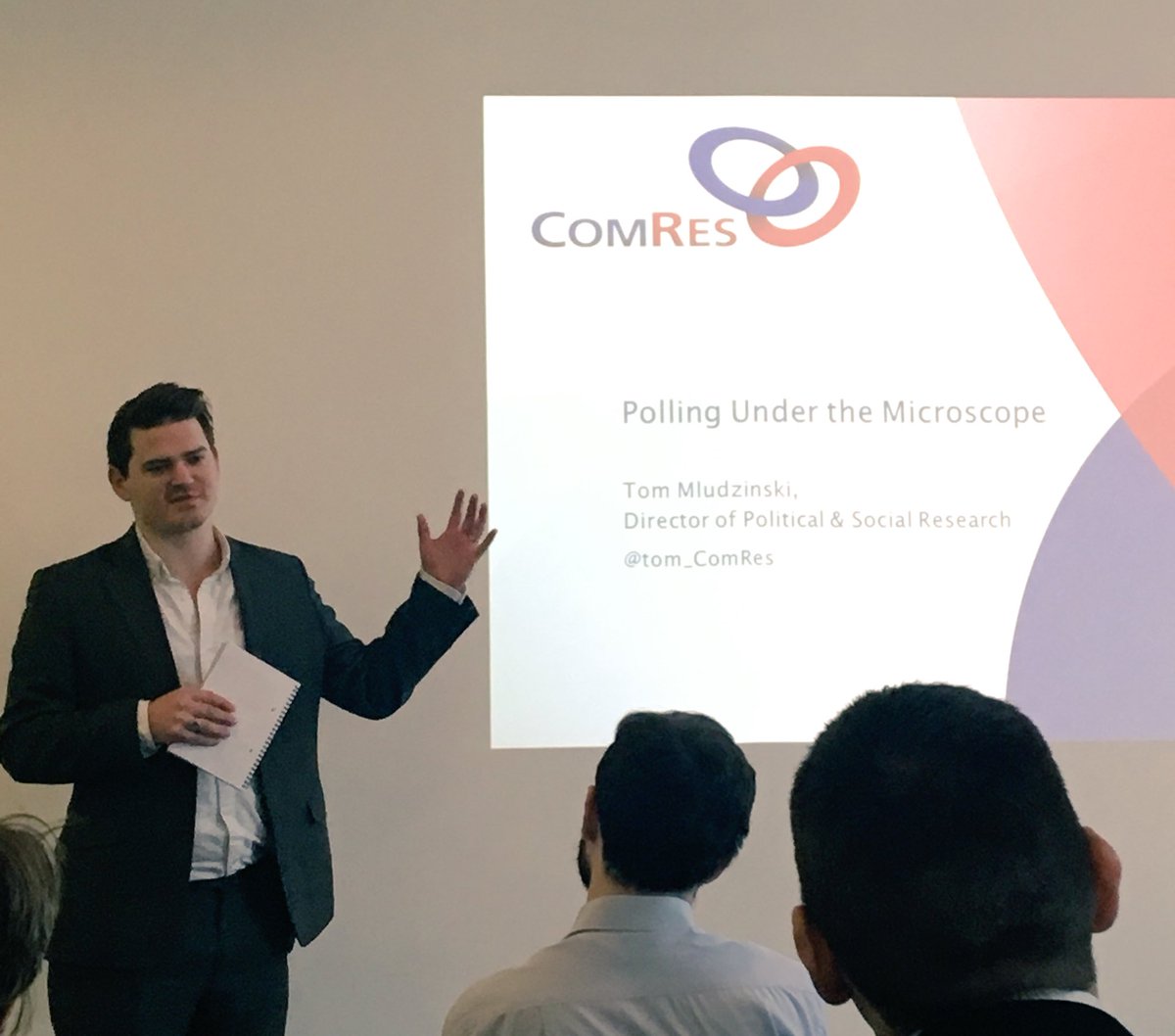With pollsters in the spotlight we asked Tom Mludzinski, Director of Political Polling at ComRes to give us the inside track on why recent results have left many of us questioning the system. Tom delivered an open and honest account detailing the rational around recent results, including where his own agency’s predictions where right and wrong. Many polls did in fact accurately predict the 2015 election, the EU referendum and the US election and many of those that were wrong were only so due to a margin so small that it is quite reasonable to understand.
He began by outlining a few of the major challenges:
The margin of error involved in predicting who is going to vote – this has played a substantiated role in recent elections and the EU referendum. It has become harder than ever to understand who is going to make the journey to the polling station. The EU referendum saw many who are usually disenchanted by politics become first-time voters and even bad weather can mean less engaged voters decide to stay away distorting the polls substantially.
Peoples own perception of the way they are going to vote – Surprisingly we are poor predictors of how we are going to vote! Sounds strange but many of us will change our minds in the days leading up to voting day.
Adapting polls to the complex voting systems – With ‘First Past The Post’ in the UK and the ‘Electoral College’ in the US the complexity in predicting the polls increases dramatically. If it was as simple as the most votes wins it would be a great deal simpler – most polls in the US election correctly predicted a popular vote win for Hilary Clinton last month.
The challenges aside, Tom did also mention that there were many things the polls could do to improve their predictive power and public profile;
Build transparency: A lack of knowledge as to how polls are conducted is big factor in why there has been such a backlash. A greater level of transparency will enable people to understand the potential shortfalls of the polling process and not become overly reliant upon the predictions. In short, its not an exact science.
Involve a multi-disciplined approach: Surveying cannot provide all the relevant data to create a prediction. As the political landscape changes, agencies need to look at using a wider range of touch points to paint a more inclusive picture of public opinion. These include indicators such as who is controlling the media coverage or which party campaign is generating a greater public reaction. Looking at finding ways to access emotional response as well as the literal response, it could be argued that the recent shock results are due to the winner appealing to peoples fears rather than promoting solid factual policy.
Be happy to sit on the fence: Polls always want to pin themselves to a conclusive result but with political prediction never being more complex, agencies would be best advised to outline how probable their prediction is and advise private clients that there is always a chance, not matter how small, that the underdog might pull through.
Tom’s presentation ended with a Q&A which brought further interesting perspectives and insights from attendees. It is certainly an engaging topic and we thank Tom for enlightening us all and facilitating such an interesting discussion.
We are extremely keen to hear from you and hope that our agenda continues to be shaped by your thoughts and feedback. If you would like to know more or would like to sign up to the PRCA Research Best Practice LinkedIn Group please send a request to connect via this link
Thanks you so much for reading!
Matt Reynolds,

Chairman – PRCA Research Best Practice Committee
Matt Reynolds
Chairman
more posts
Fake News – The Devil without the Detail
The epidemic of ‘Fake News’ spreading across social media has...
No LEGO in the mail this Christmas – The Importance of Social Insights…
Love or hate it, Christmas advertising is a talking point...
Commodity Seller to Consultative Partner – Maximising Research Best Practices
With political polling at its least reputable, media measurement being...
Does Bigger Necessarily Mean Better?
Something we heard a number of times at the ICCO...
